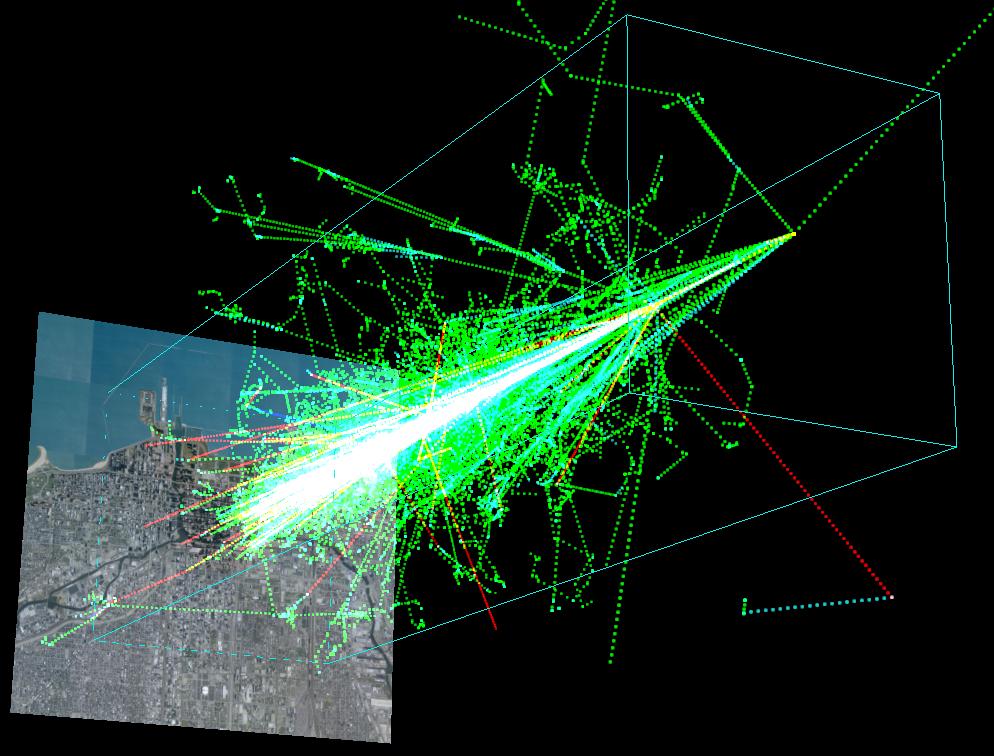Muons are a gateway drug. They are just difficult enough to detect that they are really not obvious to humans. They are just easy enough to stop in material that, once you learn to spot them, you want to stop them and watch them do what they do. What do muons do?
They decay.
In about 2 millionths of a second, that muon you just captured is gone – evaporated into a particle spray containing an electron and two neutrinos. This fact allows us to measure the lifetime of the muon. Being captured by an atom resets their quantum clock to zero. What happens after that, and when it happens, tells us the probability that a muon, nearly at rest, will decay after a certain amount of time.
If you can capture all of this in a detector system, you can measure the lifetime of the muon.
Thanks to my colleagues, Tom Coan and Jingbo Ye, we have an awesome little muon detector in the basement of Fondren Science Building. Thanks to our awesome “Internet of Things” developer, Guillermo Vasquez, we have a Raspberry Pi computer connected to the detector that accepts data from it. I had some fun writing python code to read and save the data to disk, and then I used a Jupyter notebook to analyze it.
And here is the joy of the muon: a measurement of its lifetime from an ensemble of >1000 decayed muons and assuming an exponential decay model. The accepted value of the lifetime is ![]() nanoseconds, where the numbers in parentheses are the uncertainty on the last two decimal places of the accepted lifetime measurement. Not bad. Not bad at all.
nanoseconds, where the numbers in parentheses are the uncertainty on the last two decimal places of the accepted lifetime measurement. Not bad. Not bad at all.
P.S. What’s the data coming in from the electronics, you ask? It’s the number of clock cycles between the flash of light that signals muon capture by an atom, and the flash of light that signals the decay of the muon (and the exiting of the electron from the medium). The clock speed is 50MHz, so a period of 20ns. Each clock cycle is thus 20ns of time.



